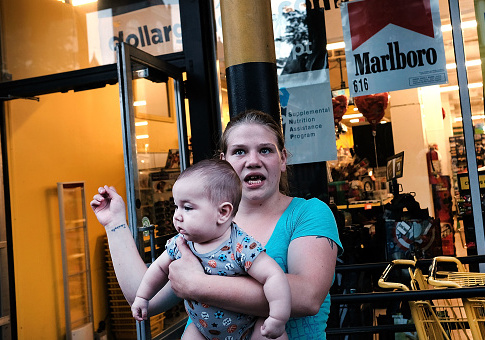The Department of Health and Human Services announced Friday a $10 million research collaboration aimed at teenage pregnancy prevention and sexual risk avoidance.
The project will focus on data-driven answers to a number of research questions about teen pregnancy. Researchers plan to focus on how best to communicate with teens about sex and the risks it presents, including through community conversations and over social media. The project is intended to contribute to the department's goal of serving the health of America's young people.
The Office of the Assistant Secretary for Health (OASH) and Administration for Children and Families (ACF) will partner with Mathematica Policy Research and RTI International, two nonpartisan research firms with which the department was already collaborating. Research will be distributed over eight different initiatives, allocating money already appropriated to HHS’s Office of Adolescent Health, a senior HHS spokesperson told the Free Beacon.
A separate project, also announced Thursday, will act in a supplemental capacity to identify, test, and replicate ways to improve teen pregnancy prevention as a part of teen health generally. That project will be in collaboration with the MITRE Corporation, a federally funded research and development center.
This move signals the administration's support for teen pregnancy prevention in spite of past concerns. HHS attracted some criticism in July when it cut $213.6 million in funding for the Obama-era Teenage Pregnancy Prevention (TPP) program. That program was first rolled out in 2010 and meant to support programs that use evidence-based approaches to reduce teen pregnancy prevention.
However, an evaluation of the TPP program's success found that 73 percent of reporting projects supported by it had no or negative impact on the teens involved with them. Negative effects included an increased probability of starting to have sex, increased probability of unprotected sex, and an increased probability of pregnancy.
Because of the underwhelming result, an August press release from HHS explained, and because of the $800 million price tag, the department recommended defunding the program and has paused it while it reevaluates its efficacy.
HHS's new project comes as a growing majority of teens choose to delay having sex. The most recent data, collected through surveys of high school and middle school students and published by the CDC, show that a majority of teens report not having had sexual intercourse. Approximately 40 percent of teens claim not to have ever had sex—around 39 percent for girls, and 43 percent for boys. Approximately 30 percent of American teens claimed to be sexually active at the time of reporting.
This has helped the historic decline in teen pregnancy rates, which fell year-on-year between 1991 and 2014 (the most recent year for which data are available). There were 24.2 births per 1,000 women between ages 15 and 19 in 2014, compared to 61.8 births per 1,000 in 1991.
However, U.S. teen pregnancy rates are higher than those in similarly developed countries, including the United Kingdom and Canada. Further, some teen mothers have multiple children in their teenage years—in 2014, approximately one in six teenage births were to a women who already had one or more child. Both of these facts signal that there is more work to be done.
Even with lower rates of teen sex and pregnancy, HHS's research will still be relevant, as the department intends to take what the spokesperson described as a "holistic" approach to learning about the factors that cause and are caused by teenage pregnancy.
That includes addressing STD rates, which are at record highs. Girls age 15 to 19 are second most common age group infected with chlamydia; boys of that age are the third most common. Girls age 15 to 19 are the second most prominent age group in the distribution of gonorrhea infections, and boys 15 to 19 are the second most prominent age group in the distribution of syphilis infections.
